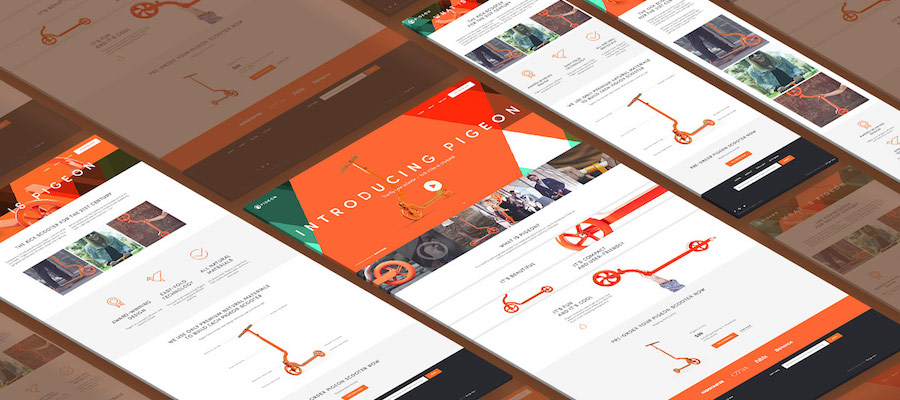In 2010, the difference between designers and developers was obvious in their choice of pants. While designers put on skinny jeans in combination with MacBook, doing web design without coding knowledge, developers came to work in cargo pants and with their own keyboard. The two groups differed not only in their way of working, but were also two completely different types of people.

However, it is the usual stereotype. In the last six years, the development of web design has clearly advanced. A wealth of new devices, technologies and tools have been added. In contrast to 2010, nowadays visually overloading designs are no longer in fashion, and but minimalist designs are in demand because of the massive spread of mobile terminals. The minimalistic model of flat and material design can primarily be seen as a visual response to the technical changes. This development makes user experience play a more importance role in web design.
From the perspective of designers, therefore, a clear separation between the tasks of designers and developers no longer makes sense. Since in the user experience design the value of visual objects depends on the opinion of the users, the two work overlap more and more. The visual design has to satisfy functional requirements and not vice versa, doing web page design without coding knowledge becomes not appropriate.
1. Code forms the basis of the design
If web designers want to use their skills today, they need to understand the medium they work with, and that the basis of the web is the code. The question is not whether designers should learn code at all, but how much code knowledge they need to understand.
A basic understanding is sufficient to develop a sense of how the code works. You do not have to be able to write your own source code, but only need to know how ones and zeros influence the design. It makes the entry into the world of web development much easier. The abundance of different programming languages such as HTML, CSS, JavaScript, PHP, Ruby or SQL is often very unpleasant without prior knowledge.
"Design is not just what it looks like and feels like. Design is how it works. "

As a designer, you do not have to be a full-stack designer and master all languages at the same time. In order to know how to translate your own design into code, it is enough to make yourself know the fundamentals of the frontend development. The front-end development covers the elements that users see and interact with. The backend development, on the other hand, runs in the background and focuses on calculations, database interactions and performance questions.
First and foremost, HTML and CSS are used in the front-end development. But due to the increasing importance of user experience, you should also familiarize with the basics of JavaScript. As a designer, it is an advantage to be able to properly assess how the three programming languages affect their own workflow.
2. Work easier by using useful tools
A large part of the work is nowadays made by designers using web design tools without coding. With their help, functional and responsive web designs can be created easily.
Mockplus is an all-in-one web UI mockup tools for free that allow you to create mockups for mobile and desktop, which helps ensure the particular mockup matches all design best practices. It’s good a web designing tool for beginners and new-starters. With well-made 200 components, you can do website design without coding. Mockplus makes it incredibly easy for everyone to create page design mockups within few minutes. And meanwhile is also an ideal choice for making interactive mockups commonly-seen in user experience design.
3. Strengthen your own abilities

“An architect that only knows how to use the pen can still be a good architect, but one that also knows how to pick up a hammer tends to have better insight into the types of building solutions one can come up with.”
By acquiring the basics of programming languages, designers automatically improve their skills. Knowing which language is used and how it is used helps to develop a better understanding of what is technically feasible and what is not. It not only saves a lot of time in the design phase, but is also helpful to the practical implementation of creative ideas.
Knowing the frontend development thus opens up new and practicable design possibilities for designers. This way, elements can be implemented independently. As UX freelancers, for example, one does not always have the necessary money to deal with a developer for the generation of the source text. The use of code and tools is helpful in order to offer customers a consolidated service.
4. Conclusion
In general, you can try to change your idea of doing web design without coding knowledge. Web designers should not only know how to design elements visually but also have appropriate code skills in front-end development. Although programming your own code building is not necessary, a basic understanding of the functionality of HTML, CSS and JavaScript is essential. Web designers should not only strengthen their own abilities, but also facilitate their work as well as the work of the developers - a classic win-win situation.
Read more:
Comments
Post a Comment